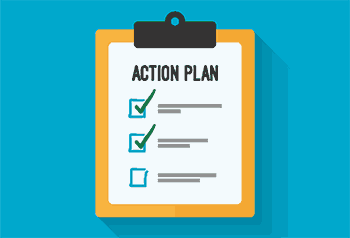Is your boardroom a hub of dynamism, creativity and energy? Or are the only actions taking place the stifled yawn or clock watching varieties? Corporate governance continues to be a big issue for companies of all sizes. And so, finding ways to make your boardroom as productive as possible should be a priority for every business. Of course, thorough planning, agenda preparation and meeting management are at the heart of an efficient boardroom functioning as they are with any meeting. On top of this though is the management of the boardroom’s big personalities which also plays a part in ensuring its cohesiveness and effectiveness. And so just like the light-hearted take on the characters in the video below, no doubt everyone has had experience of Chuck the Controller, Carina the Critic and even Timmy the Timekeeper. So how do you make this mix work effectively? Well, in this article we share some tips on how to get the most out of your boardroom.
What Makes For An Effective Boardroom?
A recent KPMG / Forbes Insight survey asked respondents to identify their greatest challenges to the board’s effectiveness. Unsurprisingly top of the list of challenges included factors such as conflicts of interest and budget and resource constraints. In addition, there were a number of easily remedied administration and management issues such as lack of formal structure and irregular meeting calendars.
Other barriers to effective boardroom functioning include a lack of openness and trust among board members. To really make progress on important issues there needs to be an environment of honesty and mutual trust. In these conditions, members can really engage in spirited debate without fear of recrimination and in a genuine attempt to take the business forward.

And, finally, perhaps the barrier with the biggest impact on boardroom effectiveness is the absence of clear outcomes and accountable actions. Yes, it’s that old, familiar problem of the talking shop – where there’s plenty said but very little action and few measurable deliverables. Now, this may well be a common problem relating to meetings generally, but when it is apparent at the highest strategic level, it effectively stifles and disables the development of the business making it a critical issue.
Action Plan To Improve Boardroom Effectiveness
So now that we have identified some of the factors that impact on the board’s performance let’s take a look at steps you can take to improve all round functioning.
Pre-meeting Research And Preparation
This aspect is essential to the boardroom’s effectiveness. Well-structured, timed agendas with concise reports and supporting papers make for more informed debate and better decision-making processes. The emphasis here is on conciseness as often the tendency is to include too much information and very detailed reports that go on for far too many pages. Given that the average boardroom meeting agenda is likely to include a dozen or more items, supporting papers that run into hundreds of pages are simply just a time waster. No one gets beyond the executive summary, which means that critical aspects of the issue can easily go unnoticed or slip through in the mass of detail.
Trust And Mutual Respect Among Board Members
Fostering a sense of mutual support and respect in the boardroom, not only between board members but also other staff in attendance, is critical to ensuring effectiveness. How the meeting is chaired will be critical to this process, but setting ground rules and mutually agreed standards of behavior in advance will help support the desired culture. Team bonding exercises and board away days can also help to promote a common sense of purpose and mutual respect.
Effective Chairing
We’ve touched on this already, but the weight of all the many demands and expectations on the board, plus all those big personalities in the room requires a strong chair to manage the meeting. The chair will have to handle the controlling Chucks of this world, along with the critics like Carina and will also need to keep things moving along to satisfy Timmy the Timekeeper. In addition, they need to ensure that all board members have an opportunity to contribute, even the more reticent ones. And they must also take charge of stamping out any rogue behavior in the form of an unwillingness to listen or inflexibility in considering other options – even fidgeting and yawning!
Accountable Actions And Clear Outcomes
Now, all the aspects we’ve looked at above count for nothing if the boardroom fails to deliver accountable actions and clear outcomes. The most effective boards are those with minutes that have clear individual accountabilities for each board member along with due dates and measurable deliverables. In this way, board members can be held accountable for their actions.
Use Your Intranet To Achieve Results
The company intranet is a great tool to help put the action plan into place. Here are three easy ways in which your intranet can support the boardroom’s effective functioning:
1. Dissemination Of Information
The intranet is the perfect vehicle for disseminating background papers and supporting information in advance of the meeting. Set up a shared project space on the intranet and restrict access to only those personnel that need it through the intranet’s rules and controls function. Board members know that all the documentation is located on the intranet and so there’s no need to send out emails every time there’s a revision to a paper or an amendment made to the agenda. This will save on time and resources for the board and the organization as a whole.
2. Keep An Access Log
The intranet can also log and notify you when a board member has read the latest updated agenda or that revised background paper. Those that haven’t done so can be chased up prior to the meeting. This helps to ensure that when the boardroom sits down for business, all participants are fully prepared and are ready to contribute.
3. Record Of Key Actions And Outcomes
Use your intranet to record and disseminate the key action points and outcomes for each boardroom meeting and to follow-up on progress. A great way to do so is by embedding a Google Sheet or Excel spreadsheet directly in the intranet after each meeting. Board members can then update and report back on their action points directly and in real-time and the information is then automatically updated in the source document for all members to view.
What’s more, feeding back to the broader workforce on the work of the board is made easy with the intranet’s news pages. All staff members can be kept up to speed with relevant company news and updates with the same timely corporate messages.
Board Or Bored?
So what’s it to be – does your organization want an efficient and high performing board or is it satisfied with an under-achieving, stagnant bored version?
For expert advice on how an intranet can support the effective functioning of your boardroom, get in touch with us here at MyHub.









